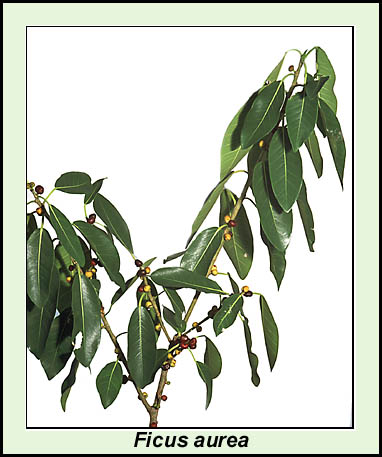Strangler Fig
Ficus aurea
Family: Moraceae
Natural History

Strangler fig, also called golden fig, is a large and fast-growing tree with a fascinating life history. The tree is native to coastal areas of south Florida, the Keys, and the West Indies and has made its way into central Florida.
Strangler fig begins its life as a parasite as its seed lodges in the cracks and crevices of the bark of a host. Cabbage palms are favorite hosts. The seed germinates and sends out air roots. These air roots take in nutrients and water from the air and host tree. Eventually the air roots grow to reach the ground and develop their own underground root system, independent of the host tree. Often during this process, the strangler fig may cover the host tree with its own trunk and strangle the host tree, hence the common name. New branches grow and if these reach the ground, they will send out new shoots and roots. Over time, this can create a compound structure of trees that covers a large area.
Some cities in Florida have used the strangler fig as an ornamental tree because of its large size, fast growth rate, and ability to provide dense shade, but it is not recommended for small landscapes. Problems can also develop with the surface roots and the large amount of fruit drop.
A closely-related tree is the less common shortleaf fig (Ficus laevisata) that grows in south and central Florida, the Keys, and the West Indies. Shortleaf fig is similar in growth habits to the strangler fig but the shortleaf fig has broader leaves with a heart shaped base, larger fruits that are 1" long, and longer stems on fruits and flowers.
